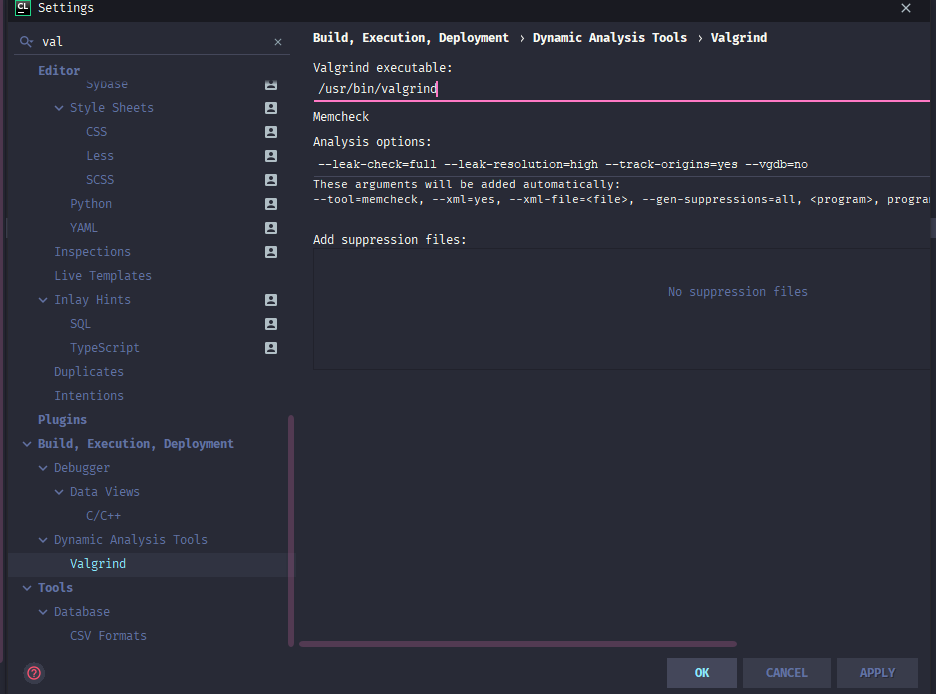

You’ll need to create a Dockerfile that configures an SSH daemon for CLion and any other user specific config you’d like. Point CLion to your MinGW-w64 dir and watch how CLion recognizes your MinGW setup. Create a file with the path MinGW-w64 dir/include/mingw.h and the content shown below.
#CLION TUTORIAL INSTALL#
Install Dockerįollow the official installation guide for Docker here. Here are the few steps to make it work: Get your MinGW-w64 compiler installed somewhere. It should also mention any large subjects within clion, and link out to the related topics.
#CLION TUTORIAL FOR FREE#
I’ve also been able to get it for free thanks to the academic license but it’s also generally available at any respectable company. clion Tutorial > Getting started with clion clion Getting started with clion Remarks This section provides an overview of what clion is, and why a developer might want to use it. Yea vim is great, powerful, extensible, etc.
#CLION TUTORIAL CODE#
It’s a great IDE overall and I value code completetion and insights. To the best of my knowledge, there is no better or easier way to isolate a workspace than to create Docker container (which is what we did at RoboMaker with launch_ros_sandbox). I’ve gone through various approaches and found this to be the least obtrusive and fastest workflow in the long run.ĭocker is the solution for keeping your system environment clean. future me) will find this helpful when setting up their ROS development workspace. I wrote this guide in the hopes that some poor soul (i.e. AWS RoboMaker is a great (commercial) tool for getting setup with a ROS environment and has a good end-to-end development workflow, but I can’t fork over $300/month for a beefy EC2 running ROS. The ecosystem is still weak in my opinion and the only tool you get is colcon, the only supported way to build ROS2 packages 1. There’s no standard workflow or tools (a la virtualenv’s for python or gradle) that come with out-of-the-box support for many IDEs and other tools. As if the learning curve isn’t enough, setting up a good development workflow is pretty annoying in my opinion. What bothers me to this day is how difficult it is to get up and running with ROS. My first job out of college with AWS RoboMaker was open source development for ROS2!
#CLION TUTORIAL HOW TO#
I enjoy working with robots and teaching people the basics of ROS and how to get up and running. I’ve been working with ROS since my sophomore year in undergrad. About one and a half years ago I wrote a blog post about using CLion for.

You can then inspect the stack trace, and your usual debugging commands. Valgrind will raise a trap signal (SIGTRAP) when it detects a problem. On the Debug tab you have your usual debug controls. You’ll see there the Valgrind report once the program stops. On the Run tab you can see the output of the program under analysis. Now Valgrind will detect that a debugger has connected and it will start your program. Without stopping the valgrind process, select the GDB Remote Debug you created and run it in debug mode. CLion provides smart code completion, static code analysis, and refactorings, and lets the developer focus. Since I had already installed CLion 2021.3.2 on my MacBook M1 (macOS. The IDE is based on the IntelliJ platform developed by JetBrains. A short tutorial on how to integrate Open MPI 4.1.2 with CLion 2021.3.2 running on. CLion is a cross-platform IDE for C/C++ development. Valgrind now waits for a debugger to connect before starting your program. CLion is an IDE (Integrated Development Environment) designed to maximize developer productivity. Select the configuration of the program you want to debug and run it with Valgrind memcheck. Now you are ready to debug your program under Valgrind.

On the ‘target remote’ args field write | /usr/bin/vgdb. Name the configuration something like Valgrind gdb We need to create a CLion debug configuration to connect to the gdbserver that Valgrind will create.Ĭreate a new GDB Remote Debug configuration. Create a CLion configuration to debug the Valgrind gdbserver vgdb-error=0 tells Valgrind to pause the debugging session so we have time to launch a remote gdb session as described below. vgdb=yes enables the Valgrind gdbserver.


 0 kommentar(er)
0 kommentar(er)
